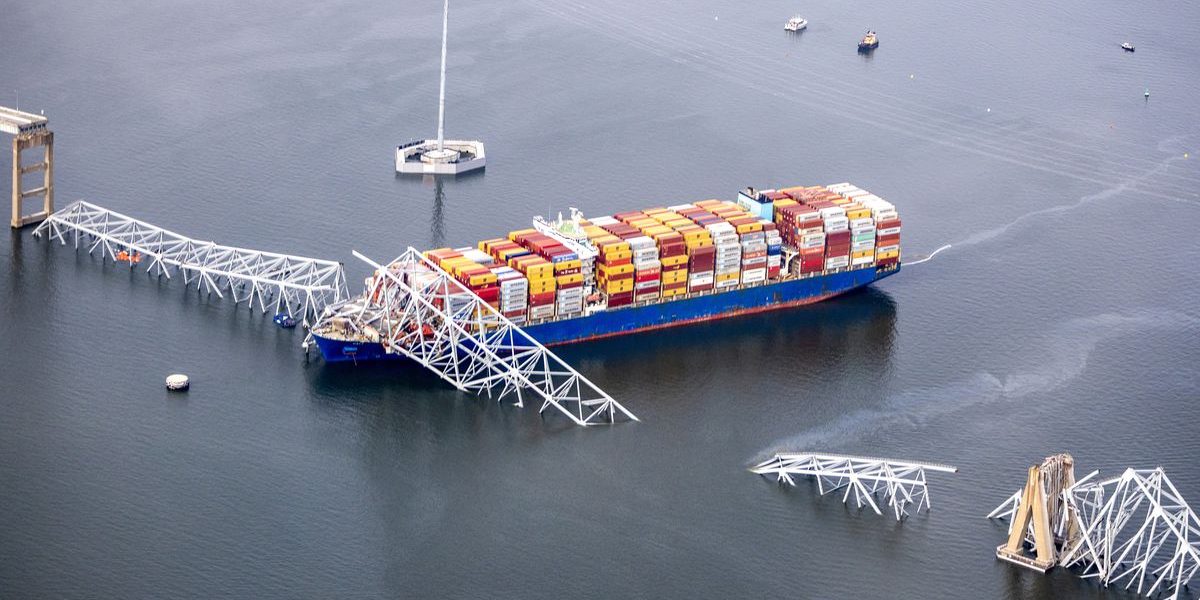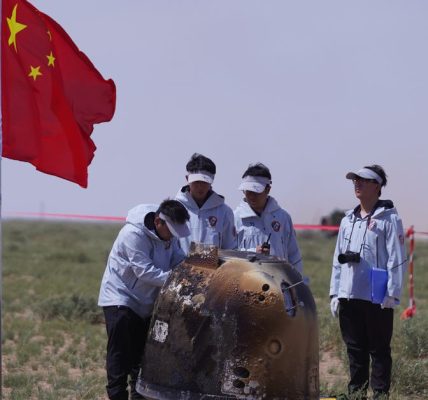Why do we need bigger ships? Azizinamini says the Francis Scott Key Bridge and Bayonne Bridge collapses have made safer for cargo ships
The National Transportation Safety Board should take a very hard look at the regulations in place to make sure there are better ways to protect the nation’s bridges. “The first thing that we learn as an engineer is that public safety is the number one issue,” Azizinamini says.
This isn’t the first catastrophic bridge collapse of its kind. In 1980 — three years after the Key Bridge’s completion — a large portion of Florida’s Sunshine Skyway Bridge collapsed when a freighter crashed into one of its support beams, killing 35 people. The National Transportation Safety Board’s accident report identified the lack of a pier protection system that could have “absorbed some of the impact force or redirected the vessel” as a factor in the bridge’s failure. In rebuilding the Sunshine Skyway, engineers placed concrete structures around the bridge’s piers to absorb the impact of a collision while also blocking the boat from hitting the bridge directly.
Civil engineers have known for a long time that bridges aren’t designed to take the type of blow from cargo ships that pass through their waters. The collapse of the Francis Scott Key Bridge in Baltimore, Maryland, made those concerns come to a head. Engineers are unsure if the solutions are enough to prevent this kind of failure.
But larger ships also carry their own set of risks. In 2021, the 1,312-foot-long Ever Given ran aground in the Suez Canal and was trapped there for nearly one week. Ports have had to make adjustments to accommodate ships’ increased sizes. The Panama Canal expansion project was completed in response to growing demand for bigger vessels. In 2019, the Bayonne Bridge connecting New York and New Jersey was raised 64 feet so ships could fit underneath.
Over the past two decades, the average size of cargo ships has grown enormously as shipping companies contend with global demand for goods. More than 90 percent of goods trade by water and maritime volumes are expected to triple by mid-century, according to the Organisation for Economic Co-operation and Development. The reason shipping companies have started opting for bigger ships is simple: the bigger the ship, the easier it is for it to carry goods from retailers like Amazon and Target.
The nearly 1,000-foot-long MV Dali was only filled halfway to capacity when it struck the Key Bridge. It weighs about 95,000 tons, and that’s not including the 4,700 containers it had on board. The ship, which is chartered by the shipping company Maersk, is nearly the same length as the Eiffel Tower — and it’s far from the only one of that size.
Source: Bridges aren’t ready for today’s huge ships
The Key Bridge isn’t going to work: It’s going to take a few years to rebuild, and it will need to be replaced
Schmucker points out that the new rules can take a few years to be adopted. “It could easily have been into the 2000s before you actually saw a bridge designed for it,” Schmucker says. “That’s because of that lengthy process we use for significant bridges over navigable waterways. They are expensive… and they can be a challenge to integrate with the environment.”
Douglas Schmucker, a professor of civil and environmental engineering at the University of Utah, told The Verge that when the main span was destroyed by the ship, two other spans lost one of their primary supports. The middle span collapsed due to it being designed to function together, not in isolation.
The Key Bridge was the second-longest continuous through truss bridge in the US, behind the Astoria-Megler Bridge connecting Oregon to Washington. But this week, the massive MV Dali cargo ship collided with the Key Bridge’s support column, causing a complete collapse that took place within seconds. Two construction workers were killed, while four others are presumed dead.
The Biden administration has already directed $60 million in federal emergency funding to Maryland. But that’s just a small fraction of what it will cost to remove and replace the bridge.
About 350 million to 600 million is the amount of money that needs to be replaced, said the professor in an interview with NPR. “I would imagine because it’s such a critical bridge, it will most likely be fast-tracked. It will probably take about two to three years to rebuild.
Any private party that was found liable will be held accountable, said Buttigieg. The issue here is that we need to get this bridge back up, and we can’t wait for the liability processes to take care of themselves.
“This is a down payment,” Transportation Secretary Pete Buttigieg said in an interview with NPR’s All Things Considered. We don’t know what the total cost will be.
Assessing a wreckage in Baltimore: A giant crane arrives in Baltimore, leaders see a ‘daunting’ cleanup job ahead
It will be difficult to complete that assessment. Divers have to work carefully and methodically, Moore said, because the water around the wreckage is so dark and full of debris that they can only see a foot or two in front of them.
“Before we can actually engage in lifting, we’ve got to complete the assessment process of the bridge, and the pieces of the bridge that are in the water,” Gilreath said Thursday.
The giant crane is being used in a way that authorities are not sure how to use it.
The first step is to “remove that portion of the bridge that is currently draped across the front of the vessel Dali,” Spellmon said. He believes the shipping channel may not open for traffic before it is large enough to hold two vessels at the same time.
The shipping channel must be reopened as quickly as possible. They will need to remove the ship and debris from the river.
A 1000 foot cargo ship has been stuck in the river and pinned to the bottom by a bridge that is resting on its bow. Some of the roughly 4,000 containers on board were dislodged in the collision, authorities said, with a few already in the water, or dangling precariously off the edge of the ship.
Source: A giant crane arrives in Baltimore, but leaders see a ‘daunting’ cleanup job ahead
A giant crane arrives in Baltimore, but leaders see a ‘daunting’ cleanup job ahead: The aftermath of the collapsed Francis Scott Key Bridge
The enormous crane was in the background at the news conference where wes Moore talked about how daunting the task was. “You know how hard the work is ahead of us.”
For now, thousands of tons of steel and concrete are blocking the main shipping channel in the Patapsco River, three days after a massive cargo ship smashed into the bridge.
Federal money and resources are beginning to flow to Maryland as authorities plan how they will remove the crippled ship, and get the nation’s ninth-largest port back to work. But they acknowledge the effort will not be easy, cheap or quick.
We’re going to have to cut the portion of the bridge into four different members, and remove it from our way so we can get to the remaining work,” Spellmon said.
“That portion of the bridge weighs upwards of 4,000 tons,” said Lieutenant General Scott Spellmon, the head of the U.S. Army Corps of Engineers, in an interview set to air Saturday on NPR’s Weekend Edition.
A massive floating crane capable of lifting 1,000 tons at once has arrived at the site of the collapsed Francis Scott Key Bridge as authorities scramble to reopen the main shipping channel to the port of Baltimore.
The collapsed bridge has an effect on supply chains all over the country, in every state of the union, according to Congressman Mfume. “We’ve got to move swiftly to clear the channel.”
The ship has 56 containers that carry hazardous materials. A total of 13 containers have been “impacted” by the bridge strike, with soap products, perfume and an unnamed kind of resin among the contents.
The sheen on the water may have been caused by about 20 gallons of oil that leaked from a damaged equipment on the front of the ship.
Source: A giant crane arrives in Baltimore, but leaders see a ‘daunting’ cleanup job ahead
Water Detection at the Dali Air Force Station via the Coast Guard Air Monitoring Unit (CAFAS), Ota (MoRaT)
The Coast Guard has been conducting air monitoring on and around the Dali through a contractor, according to a statement, and no harmful or flammable releases have been detected.



